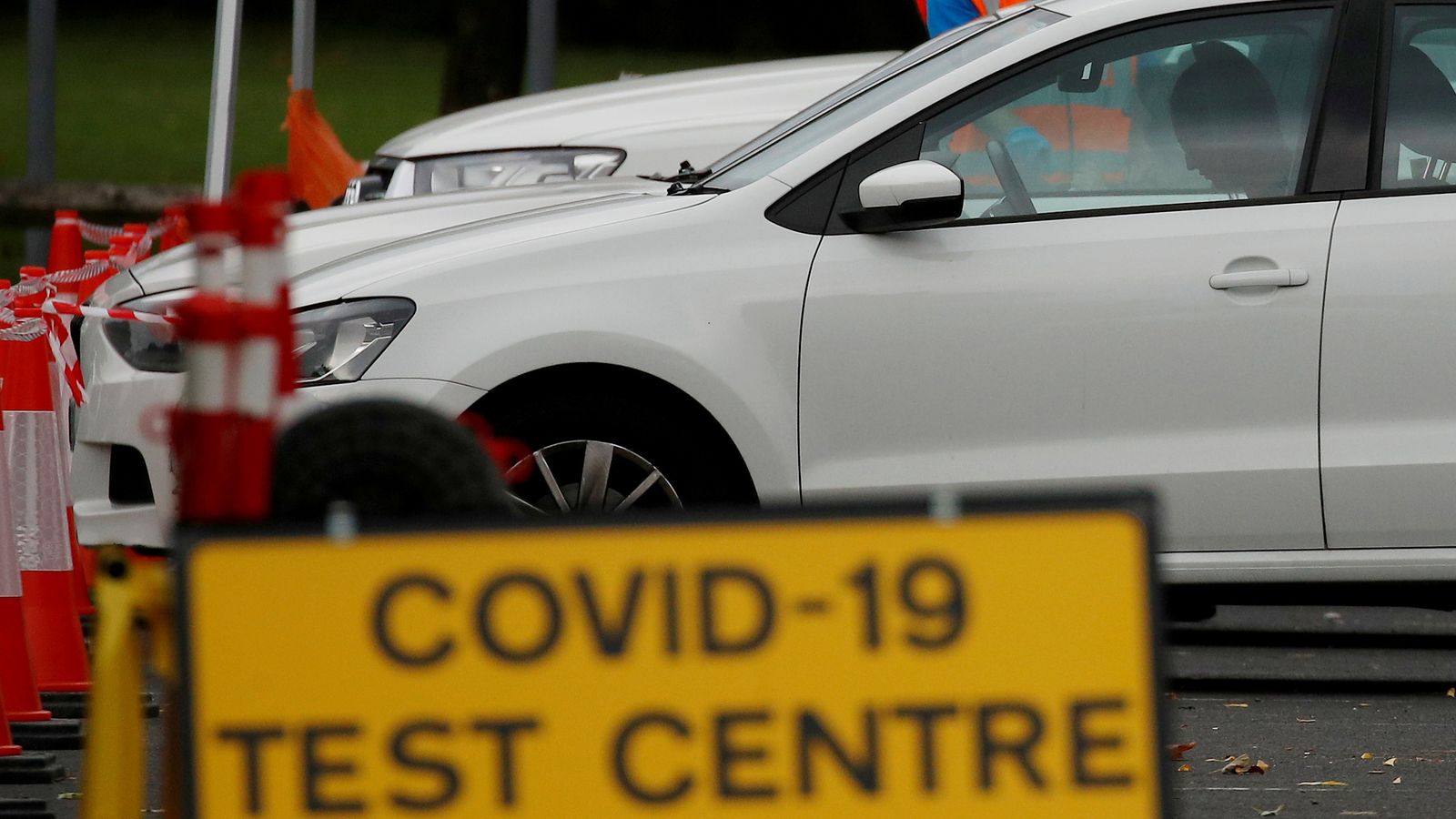The weekly R number in England is estimated to have risen to between 1.1 and 1.3 – with the number of COVID infections in the country now at its highest level since January.
The reproduction figure, from the UK Health Security Agency (UKHSA), means that for every 10 people with coronavirus they will, on average, infect between 11 and 13 others.
The pandemic therefore appears to be growing in England as last week it was estimated to be between 1.0 and 1.2.
It comes as coronavirus infection levels have risen across the UK.
The number of cases in England are estimated to have increased to their highest level since the beginning of the year.
Latest COVID updates from the UK and around the world
The latest Office for National Statistics (ONS) survey estimates around one in 50 people in England had the virus in the week to 22 October, up from one in 55 the previous week and the equivalent of about 1.1 million people.
COVID-19: Pupils urged to take lateral flow test before schools return from half-term to stop coronavirus ‘in its tracks’
COVID-19: New variant more resistant to vaccines will emerge, Welsh first minister says as he criticises red list cut
COVID-19: Measures in Wales strengthened in attempt to reduce high coronavirus case rates
That is the same proportion of people who were estimated to have coronavirus at the peak of the second wave in early January.
In Wales, the level is at its highest since estimates began in summer 2020.
For the week to 22 October, one in 40 people in Wales were thought to have the virus, and one in 75 in Northern Ireland and Scotland, the ONS survey of people in private households showed.
The latest government figures show 8,914 patients were in hospital in the UK with COVID-19 on 27 October, up 9% on the previous week, but still well below levels seen during the second wave when hospital numbers peaked at 39,254 on 18 January.
A total of 1,060 deaths had been reported in the seven days to 28 October of people who died within 28 days of testing positive for coronavirus.
This is the highest seven-day total since 12 March but remains below the second wave peak of 8,739 in the seven days to 23 January.
The ONS said the percentage of people testing positive remains highest for those in school years 7 to 11, at 9.1%.
Despite the prevalence of COVID-19 across the four nations, hospital admissions and deaths remain well below levels seen during the second wave in January.
The vaccine rollout is largely credited as the reason for the lower figures.
The estimates come as students are being encouraged to get tested for COVID-19 before returning to school after the October half-term.
Ministers and the UKHSA are calling on young people to take a rapid lateral flow test to minimise the risk of disruption to lessons and ensure families can “enjoy the best” of the festive season.
Ahead of the ONS figures for Wales being published, the country’s first minister Mark Drakeford warned “the pandemic is far from over”.
He added: “We need to take more action now to strengthen the measures we have in place at alert level zero to prevent coronavirus spreading even further and more people falling seriously ill.”
Professor Jim Naismith, director of the Rosalind Franklin Institute, and professor of structural biology at the University of Oxford, said he hopes England’s infection level has peaked, but warned that the country is “running very hot”.
He said: “If England has peaked, then other numbers will start to fall. I certainly hope so – 1,000 people every day are ending up in hospital and 1,000 a week dying. We are running very ‘hot’.”






















